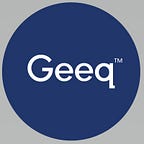‘Geeqs’ come in a variety of shapes and sizes, with a wonderful variety of interests, professions, and specialties. This rich diversity often means that some of us are ‘Geeqier’ than others when arriving upon certain subjects (and that’s ok!)
To ensure everyone in the community remains on the same page, we’ve constructed this ‘Glossary of Geeq™’. This is designed to help you wade through some of the technical jargon and really get to grips with the revolutionary new blockchain protocol which is Proof of Honesty.
— — — — — — — — — — — — — —
Agents and Nodes = Agents control the nodes, systems, and machines that are participating in a network. The nodes are the elements that may validate a blockchain.
Block = Blocks are packages of validated data/transactions.
Blockchain = Blockchains are distributed ledgers made up of blocks of validated transactions chained together.
Byzantine Fault Tolerance (BFT) = Is the tolerance level of a network-based upon their ability to nullify the efforts of malicious nodes. If the BFT level is 51%, it means that the network can be reliable until 51% or more of the nodes are malicious. So the higher the better!
Consensus = This is a catch-all category used to describe the rules, protocols, or mechanisms that determine how blockchains are constructed.
Crash = Is where a node fails to deliver a result in a transaction due to a failure.
Decentralized = The opposite of centralized. Decentralized is where power, data, and responsibility is no longer placed with a single entity, government or party.
Edge Security = The client software which is deployed by nodes using Geeq in order to validate transactions made on the network.
Geeq = A public blockchain infrastructure-as-a-service that is secured by our Proof Of Honesty protocol (PoH).
Geeqchain = An instance of a Geeqchain is any blockchain that uses Geeq’s validation protocols and architecture.
Genesis Block = The first block in a blockchain which contains the code which determines the rules for the rest of that blockchain.
Internet of Things (IoT) = While IoT is a broad term, it mainly relates to the convergence of different technologies which allow us to: gather real-time data, communicate remotely, automate and connect previously unconnected objects. These connected smart objects could be anything from mains water pipes to your household fridge.
Leader = In many other blockchains, a node is designated as a Leader to propose a block of transactions to be validated by other nodes.
Ledger = A record of transactions that have been made on the network.
Proof of Honesty™ = Geeq’s unique blockchain protocol.
Protocol = The set of rules which decide how data is exchanged and transmitted on a blockchain system.
Our new Geeq™ blog which we will be using for updates and articles can be found here:
https://geeq.io/category/news/
— — — — — — — — — — — — — — — — — — — — — — — — — — —
To learn more about Geeq™ follow us:
Website ~ Discover something new ~ www.Geeq.io
Telegram ~ Join us for a chat ~ https://t.me/GeeqOfficial
Twitter ~ Keep up to date ~ https://twitter.com/GeeqOfficial
YouTube ~ Feast your eyes ~ https://www.youtube.com/c/GeeqOfficial
